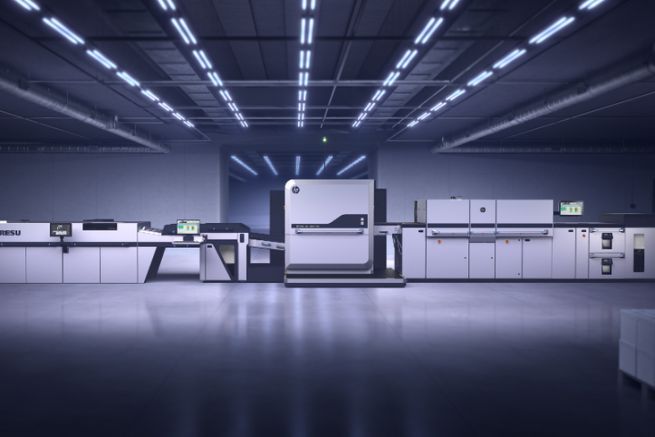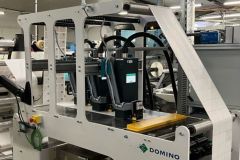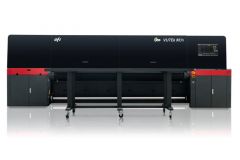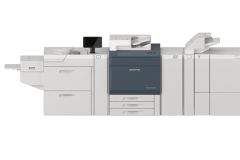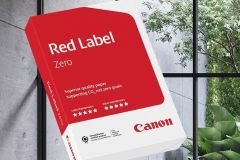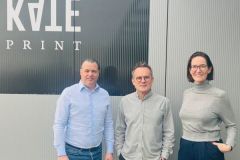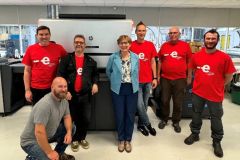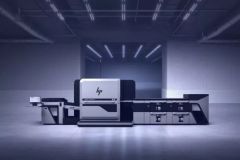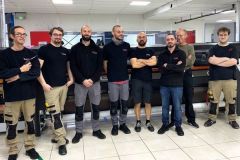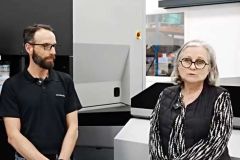The HP Indigo 35K Digital Press is the new flagship folding carton press from HP Indigo. Built on the basis of the HP Indigo 30000 that it replaces, this 53 x 75 press available in up to 7 colors is equipped with several new features, including the spot master. Philippe Bodet, specialist of the presses for the folding carton at HP Indigo, reveals us its specificities.

GraphiLine: For which market is the 35K digital press intended?
Philippe Bodet: The 35K is specifically dedicated to the folding carton market, unlike the HP Indigo 15K which is coming on the market (heir of the HP 12000) and the 7K (new version of the HP 7900) which are two sheetfed machines that can be addressed to the folding carton market.
The 35K prints on paper and cardboard from 150 to 600 microns thick. It also prints PVC, polypropylene and PET.
This digital press allows the production of folding cartons for the pharmaceutical, cosmetic, perfumery or food markets for example.
The 35K press is the ideal complement to offset for the folding carton market, responding to the evolution of consumption which requires short runs.
What's new compared to the previous model, the HP 30000?
The 35K and the HP 30000 have the same pure functionality, i.e. the same format - 53x75 cm, the same printing speed - 3450 f/h in quadri and 4600 f/h in three colors, and the same number of possible colors - 7 colors (CMYK, orange, violet and green or white and all direct tones).
With the 35K, the range of the supports was enriched: it prints thinner supports of 150 microns thickness (against 250 minimum on the 30000).
It also benefits from general improvements in particular the paper passage which optimizes the production times.
But the two major evolutions are the spot master and the availability of 35K in high definition.
What is the spot master?
This system patented by HP is an automated color calibration process. With the spot master, the machine will create a number of patches to reach the target shade. Each time, the sheet printed with these patches goes through an inline spectrocolorimetric control. And the target is reached on average in only three sheets (with delta E lower than 1).
This process takes less than 5 minutes. It saves time and waste. And it allows the customer to easily validate the color.
With high definition, how fine is the 35K printing?
The other new feature, the availability of 35K in high definition, allows for an increase from 800 to 1600 dpi. With HD printheads (and HD rip), print dots are up to 30% smaller and screen ruling reaches 290 LPI.
High definition is interesting for the secure printing of packaging. It allows for micro text, and combined with HP's other capabilities (such as invisible inks or personalization), this option is particularly interesting for offering value-added products.
And soon, the 35K will print stochastic frames (also called random frames).
What length of run is this press designed for?
This is THE question for printers, but it's impossible to give an answer like that.
The only way to answer this is to analyze the market with the printer, because the tipping point with offset will be different depending on his equipment and products.
For example, in the pharmaceutical market, serilization is common (with a unique serial number or QR code). It is often done on a second machine, after the offset printing. Digital can then be very advantageous thanks to a single passage which generates a saving of space, waste, an increase in reactivity and a reduction in costs.
But for a cartoner producing entry-level cartons for agribusiness, for example, the cost of offset waste is minimal, because the substrate is not very expensive. This will completely change the tipping point.
How are the sales of the 35K in Europe and in France?
In Europe, at least one press has already been installed (in Eastern Europe). And in France, the first 35K is being installed. In any case, we see the activity restarting in France.
